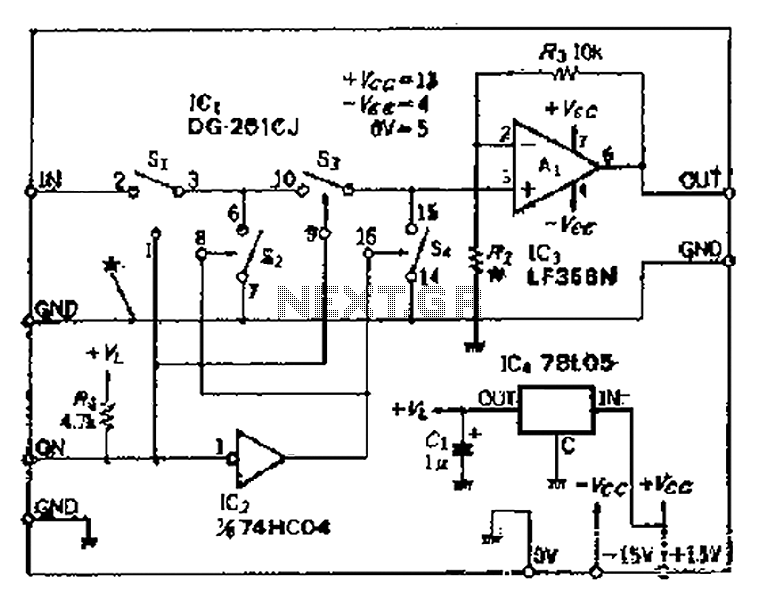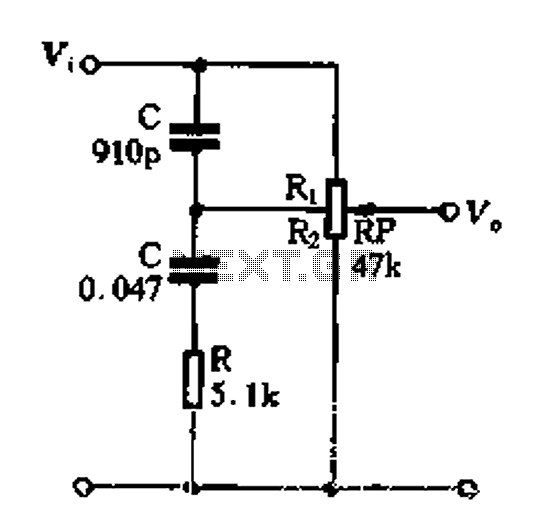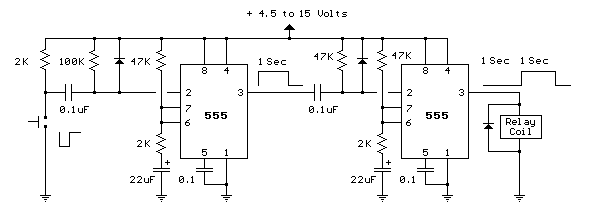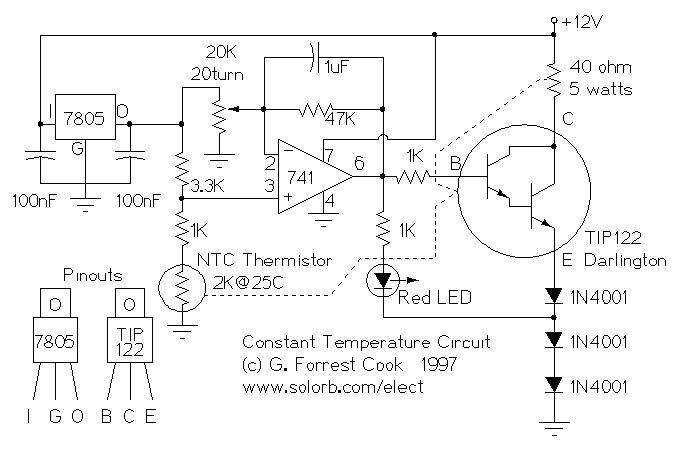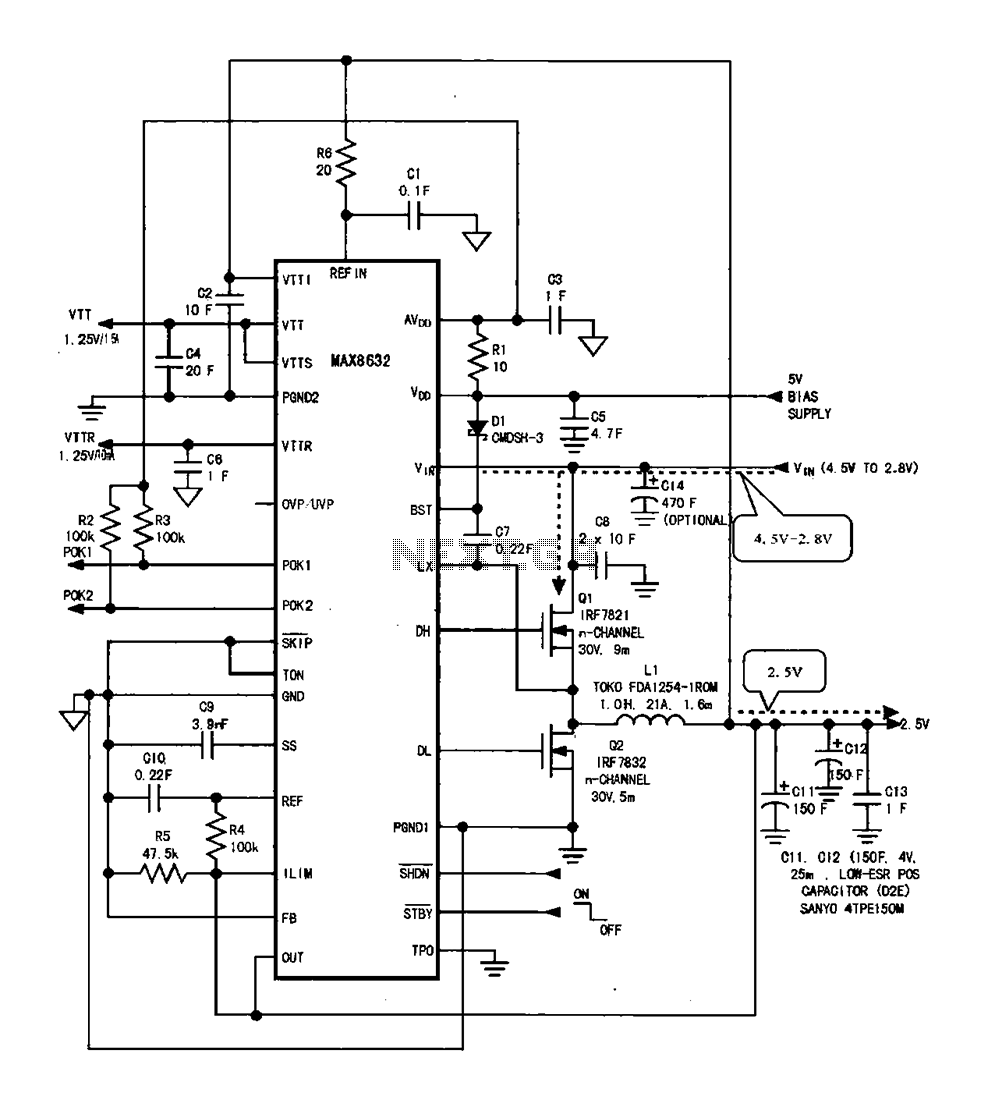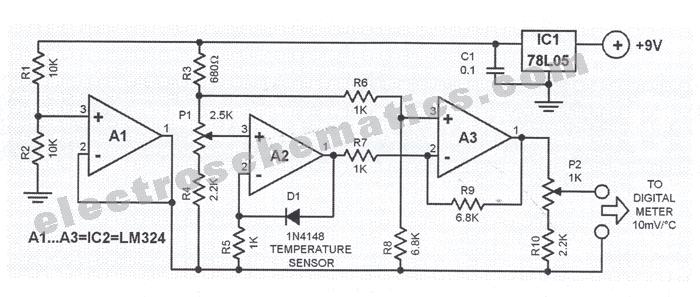
Normally closed contact burglar alarm circuit diagram
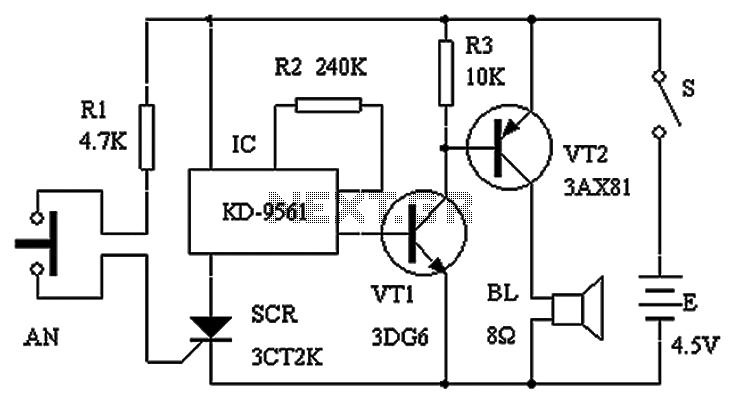
The circuit schematic presented in Figure 1 consists of an SCR, R1, and an AN SCR trigger switch circuit, along with an analog circuit composed of IC1, R2, VT1, VT2, and a BL siren. Typically, the circuit is designed to manage household appliances by disconnecting two normally closed contacts, which prevents the SCR trigger signal from activating the alarm. When the household appliances are lifted, the two contacts automatically close, allowing the SCR trigger signal to be obtained via R1 from the positive power supply. This results in the SCR conducting, powering IC1, and subsequently generating a siren signal at the output terminal through VT1 and VT2, which amplifies the sound of the alarm. In this scenario, even if the appliance is returned to its original position or the AN is destroyed, the alarm will continue to sound. The only way to disarm the alarm is for the owner to access the alarm installation, and it may be challenging for others to locate the switch S to disable the alarm.
The circuit operates as a security system for household appliances, utilizing a silicon-controlled rectifier (SCR) as a key component for triggering the alarm. The SCR is controlled by a resistive divider formed by R1, which ensures that when the circuit is activated, sufficient voltage is present to switch the SCR into conduction mode. The use of normally closed contacts in the system creates a fail-safe mechanism, as any tampering with the appliances will trigger the alarm.
In the event of an unauthorized removal of the appliance, the circuit detects the change in state of the contacts, which leads to a change in the voltage across R1. This change triggers the SCR, allowing current to flow through it and powering IC1, which is likely a timer or oscillator circuit that drives the output stage. The output stage, composed of transistors VT1 and VT2, functions as an amplifier to drive the BL siren, producing a loud alarm sound that serves as a deterrent against theft or tampering.
The design ensures that once triggered, the alarm remains active regardless of the state of the appliance or the contacts, which adds an additional layer of security. Disarming the system requires physical access to the alarm control panel, which is intended to prevent unauthorized individuals from easily disabling the alarm. This setup is particularly useful in scenarios where the protection of valuable household appliances is critical, providing peace of mind to the owner. Circuit schematic shown in Figure 1.SCR, R1 and AN SCR trigger switch circuit composed; IC1, R2, VT1, VT2 and BL siren composed of analog circuits. Usually, AN oppression by ho usehold appliances, making two normally closed contacts disconnect, SCR trigger signal without blocking, the alarm does not work. When home appliances were lifting, AN two contacts automatically closed, the trigger terminal SCR trigger signal via R1 obtained from the positive power supply, SCR conduction, IC1 power of work, output terminal siren signal by VT1, VT2 power zoom, push speaker loud alarm sound.
In this case, even if the appliance back in place or destroy AN, can not stop the alarm sound. Only the owner to open the alarm installation and other people together and sometimes difficult to find the switch S, in order to disarm the alarm.
The circuit operates as a security system for household appliances, utilizing a silicon-controlled rectifier (SCR) as a key component for triggering the alarm. The SCR is controlled by a resistive divider formed by R1, which ensures that when the circuit is activated, sufficient voltage is present to switch the SCR into conduction mode. The use of normally closed contacts in the system creates a fail-safe mechanism, as any tampering with the appliances will trigger the alarm.
In the event of an unauthorized removal of the appliance, the circuit detects the change in state of the contacts, which leads to a change in the voltage across R1. This change triggers the SCR, allowing current to flow through it and powering IC1, which is likely a timer or oscillator circuit that drives the output stage. The output stage, composed of transistors VT1 and VT2, functions as an amplifier to drive the BL siren, producing a loud alarm sound that serves as a deterrent against theft or tampering.
The design ensures that once triggered, the alarm remains active regardless of the state of the appliance or the contacts, which adds an additional layer of security. Disarming the system requires physical access to the alarm control panel, which is intended to prevent unauthorized individuals from easily disabling the alarm. This setup is particularly useful in scenarios where the protection of valuable household appliances is critical, providing peace of mind to the owner. Circuit schematic shown in Figure 1.SCR, R1 and AN SCR trigger switch circuit composed; IC1, R2, VT1, VT2 and BL siren composed of analog circuits. Usually, AN oppression by ho usehold appliances, making two normally closed contacts disconnect, SCR trigger signal without blocking, the alarm does not work. When home appliances were lifting, AN two contacts automatically closed, the trigger terminal SCR trigger signal via R1 obtained from the positive power supply, SCR conduction, IC1 power of work, output terminal siren signal by VT1, VT2 power zoom, push speaker loud alarm sound.
In this case, even if the appliance back in place or destroy AN, can not stop the alarm sound. Only the owner to open the alarm installation and other people together and sometimes difficult to find the switch S, in order to disarm the alarm.
Warning: include(partials/cookie-banner.php): Failed to open stream: Permission denied in /var/www/html/nextgr/view-circuit.php on line 713
Warning: include(): Failed opening 'partials/cookie-banner.php' for inclusion (include_path='.:/usr/share/php') in /var/www/html/nextgr/view-circuit.php on line 713
